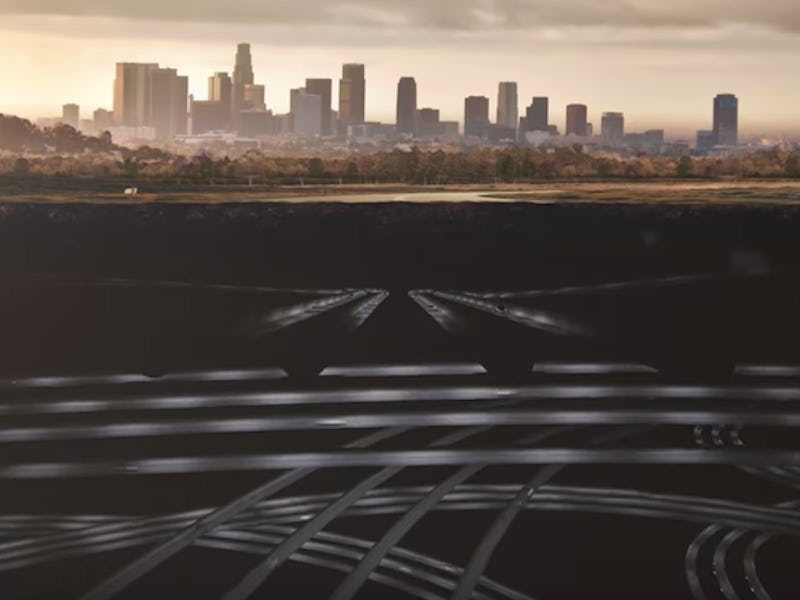Elon Musk’s elaborate transportation concept, helmed by the Boring Company, involves a labyrinthine tunnel system that will propel cars beneath the city of Los Angeles and reduce traffic. At a TED talk in Vancouver on Friday, Chris Anderson asked the CEO of SpaceX and Tesla if the expense of tunneling wouldn’t block such an ambitious idea from becoming a reality.
Admitting that tunneling does come with a high cost, Musk launched into a lengthy explainer detailing how the Boring Company is prepared to decrease the cost-per-mile of tunneling at least ten-fold. Here’s how he plans to do it.
Shrink the tunnel size: The Boring Company’s concept for an underground fast-transit system is ambitious. During the talk, a futuristic video was unveiled that visualizes the way cars would run on metal sleds at speeds of up to 124 miles per hour underground. Since cars in the Boring Company’s tunnel system will run solely on these electric sleds, Musk says they’ll be able to cut the tunnel diameter by a factor of two or more.
“So a single-road lane tunnel, according to regulations, has to be 26 feet, maybe 28 feet in diameter to allow for crashes and emergency vehicles and sufficient ventilation for combustion-engine cars,” says Musk.
“But if you shrink that diameter to what we’re attempting which is 12 feet — which is plenty to get an electric skate through — you drop the diameter by a factor of two and the cross-sectional area by a factor of four. The tunneling cost scales with the cross-sectional area, so that’s roughly a half-order of magnitude improvement right there.”
Get yourself a machine that can do both: Musk sees conventional tunneling machines as a hinderance, and naturally he’s interested in designing something more efficient for his underground project. As he explains it, current tunneling machines are made to tunnel first and then construct reinforcements along the tunnel wall. “If you design the machine instead to do continuous tunneling and reinforcing, that will give you a factor of two improvement,” he says.
Musk said back in February that he was considering buying Nannie, a used boring machine. With the ability to tunnel 300 feet a week, he mentioned at the time that he was hoping to figure out a way to get the machine tunneling a mile a week instead.
More power: “Also, these machines are far from being at their power or thermal limit,” says Musk. “So you can jack up the power to the machine substantially.” With that change, Musk says he thinks he can improve the costs-per-mile of tunneling by a factor of at least two, and maybe by a factor of four or five.
To summarize, if Musk is set on creating “at least a ten-fold improvement in the cost-per-mile of tunneling,” here’s how he gets to ten:
- Cut the tunnel diameter: factor of five
- Tunnel with more efficient machines: factor of two
- Increase the amount of power in tunneling machines: factor of two to five
That lands us with an improvement factor of nine to 12, so although it’s not a fine-tuned ten, you get the idea.
With L.A.’s current transit expansion already costing billions, perhaps alternative tunneling concepts aren’t something to scoff at.
